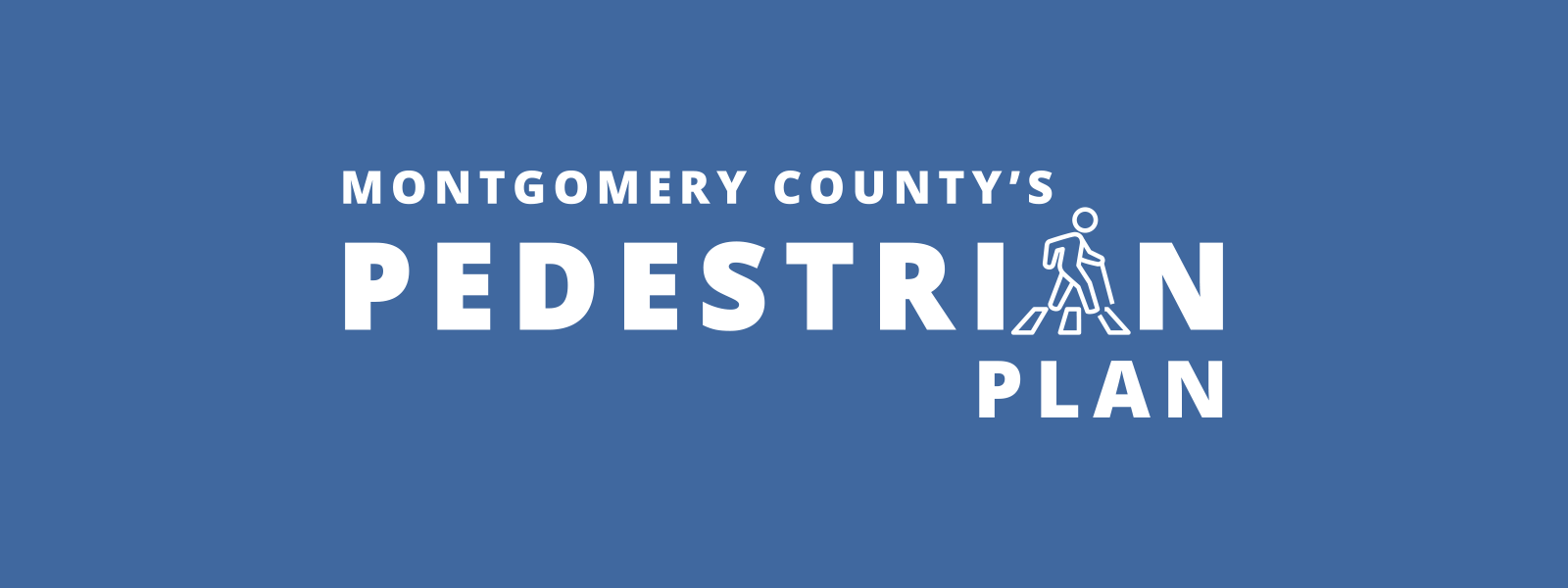
Survey findings detail how satisfied pedestrians are walking or rolling in Montgomery County, why people walk, and how walking has changed since the start of the COVID-19 pandemic
WHEATON, MD – The Montgomery County Planning Department, part of the Maryland-National Capital Park and Planning Commission (M-NCPPC), will present the results of its Pedestrian Master Plan survey at the March 18 Planning Board meeting. The Pedestrian Master Plan, currently underway, will identify best practices, analyze information from people who walk and roll, and examine ways to improve the pedestrian experience using several analytical tools, including a pedestrian comfort map and a crash analysis. The findings from the countywide pedestrian survey, conducted in fall 2020, will inform the Pedestrian Master Plan’s existing conditions report and future recommendations by helping Montgomery Planning better understand pedestrian travel attitudes and behaviors. The survey findings also will serve as a benchmark to analyze trends in pedestrian behavior over time.
“This is the first time we have a statistically valid survey where residents throughout the county shared insights into how and why they walk and roll,” said Project Manager Eli Glazier. “These invaluable data points will help staff make recommendations for the Pedestrian Master Plan, Vision Zero efforts and master planning.”
Key findings of the pedestrian survey:
- Overall satisfaction with the Montgomery County pedestrian experience is 52 percent. Among respondents who reported having a disability, satisfaction with the county’s pedestrian experience was only 43 percent.
- While walking for exercise and recreation is widespread – 91 percent reported doing so – respondents living in urban areas of the county were much more likely to walk for other purposes such as grocery shopping (73 percent), personal business (58 percent), medical appointments (26 percent), and dining out (38 percent).
- COVID-19 has changed the reasons people are walking in Montgomery County. Due to the pandemic, 51 percent of respondents are walking more for exercise or recreation, while 66 percent are taking fewer trips to restaurants and bars and 53 percent are taking fewer walk commute trips.
- Telework has become much more widespread in Montgomery County. While 30 percent of respondents said they teleworked at least one day a week before the pandemic, 74 percent indicated they telework at least one day a week during the pandemic. 54 percent of respondents anticipate being able to telework at least one day a week after the pandemic ends.
See the full results of the survey and read the full report.
“The results of this survey will fill a big gap in our data. We know so much about driving behavior in Montgomery County and now, for the first time, we have data to support pedestrian assumptions and eventually recommendations which will help to shift our county from auto-centric to one that caters to all modes of transportation – but especially pedestrians,” said Planning Director Gwen Wright.
About the survey
The Pedestrian Master Plan survey was sent randomly to 60,000 households in Montgomery County via postcard, with 4.1 percent of those households responding. The survey was made available in English, Spanish and simplified Chinese. Households in the City of Rockville and City of Gaithersburg were not included in the survey because those cities have independent planning authority and are not subject to the Pedestrian Master Plan. Survey results were compiled at the countywide level and for three geographic specific areas:
- Urban (downtowns and town centers, such as Downtown Wheaton and Germantown Town Center)
- Transit Corridors (within one mile of master-planned transit corridors)
- Exurban/Rural (remainder of the county)
Survey responses were weighted to better represent the actual demographics of Montgomery County using the American Community Survey 2018 Five-Year Estimates for income, race, and Hispanic, Spanish, or Latino origin distributions for each geography to ensure the responses are appropriately representative of each area and the county as a whole.
About the Pedestrian Master Plan
The Pedestrian Master Plan, now being developed by Montgomery Planning’s Countywide Planning and Policy Division, will identify best practices, analyze information from people who walk and roll, and examine ways of improving the pedestrian experience using several analytical tools, including a pedestrian comfort analysis and a crash analysis. The resulting Pedestrian Master Plan will provide county leaders and agencies, such as Montgomery County Department of Transportation and the Department of Permitting Services, recommendations and guidance related to:
- Prioritization of pedestrian pathways and safe crossings.
- Pedestrian-supportive policies and operational practices.
- Pedestrian design toolkit of treatments and operational approaches to traffic calming, signal timing, accessibility features, and more.
Recommendations will support making walking universally accessible to county residents of all ages and abilities and will consider walking (including with a cane, a walker, or a stroller), and rolling (with a wheelchair or mobility scooter).
The Pedestrian Master Plan will complement the 2018 Bicycle Master Plan, Thrive Montgomery 2050 planning currently underway and other Vision Zero-related efforts to make streets safer and more accessible, including the 2019 Veirs Mill Corridor Master Plan and 2019 Aspen Hill Vision Zero Study.